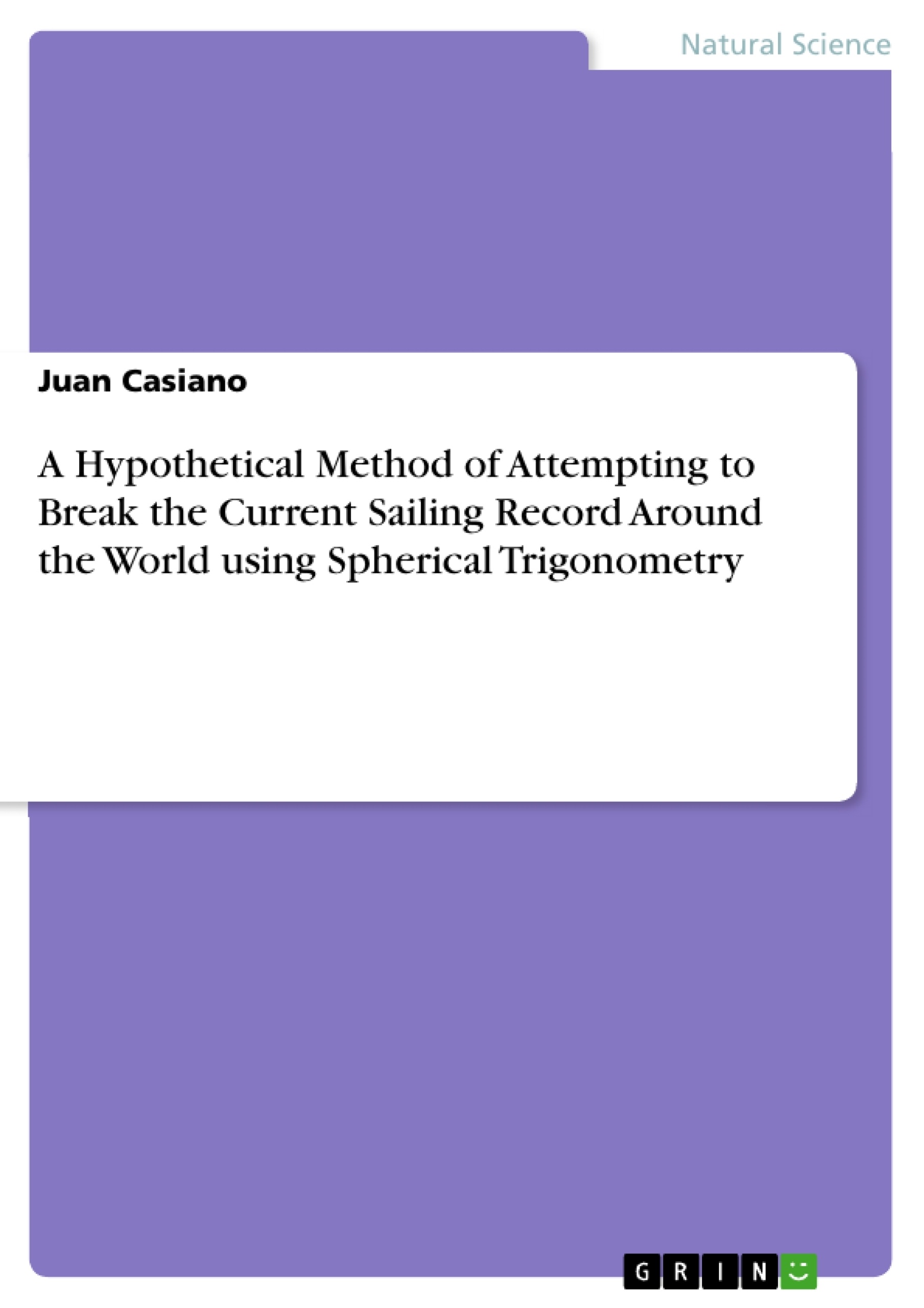Ever since the creation of math, mathematicians have attempted to extend, or challenge the work of another mathematician with the intent to try and disprove their discoveries. The applications of math we now use to solve the problems of life, are due to discoveries of these great minds. Mathematics is no longer a system to count objects, as this examination will attempt to: Propose a Hypothetical Method of Attempting to Break the Current Sailing Record Around the World using Spherical Trigonometry.
The scope in which this examination will take into account is that of spherical trigonometry at its sole. Situations will be adjusted to make spherical trigonometry the tool to attempt to challenge the current record of sailing around the world. It will not include the vector components entirely. Needless to say, the majority of the trigonometry used in this examination will be explained just enough to be understandable for the common math enthusiast. The record breaking component, is only a form in which this sub-branch of spherical geometry can be applied in the real world.
The result of this examination ended with a success. The method taken resulted in breaking the current record held by Loïck Peyron within an astonishing 45 days 13 hours 42 minutes and 53 seconds. But from this examination it was derived that, with respect to the given points, that you could go around the world in 20 days 17 hours 5 minutes and 17 seconds when going at a speed of 40 knots. However, this result was attained by not taking into consideration certain external factors that Loïck Peyron may have encountered when he broke the record. Therefore, if the condition were just right, and a constant speed of 40 knots was kept consistent throughout, the results from this examination would be valid.
Inhaltsverzeichnis (Table of Contents)
- A. Acknowledgment
- B. Introduction
- C. Spherical Trigonometry
- D. Record Breaking Attempt
- E. Conclusion
- F. Works Cited
Zielsetzung und Themenschwerpunkte (Objectives and Key Themes)
This examination aims to propose a hypothetical method for breaking the current sailing record around the world using spherical trigonometry. It focuses on applying this branch of mathematics to the real-world scenario of sailing, without delving into vector components.
- The application of spherical trigonometry to sailing
- The development of a hypothetical method to break the world record
- Analysis of the current record holder's route, equipment, and speed
- Exploration of the shortest distance between two points on a sphere
- The role of non-Euclidean geometry in solving real-world problems
Zusammenfassung der Kapitel (Chapter Summaries)
- A. Acknowledgment: This section addresses the limitations of the examination, highlighting that it is purely hypothetical and does not consider external factors such as climate and the Earth's non-perfect spherical shape.
- B. Introduction: This section provides background information on the history of non-Euclidean geometry and introduces the concept of spherical trigonometry. It also discusses the importance of understanding the record holder's approach and equipment.
- C. Spherical Trigonometry: This section explores the key concepts of spherical trigonometry, focusing on the shortest distance between two points on a sphere, the great circle, and the difference between great circles and small circles.
Schlüsselwörter (Keywords)
This examination focuses on spherical trigonometry, non-Euclidean geometry, sailing, world record, record breaking, hypothetical method, great circles, and the shortest distance between two points on a sphere.
- Quote paper
- Juan Casiano (Author), 2013, A Hypothetical Method of Attempting to Break the Current Sailing Record Around the World using Spherical Trigonometry, Munich, GRIN Verlag, https://www.hausarbeiten.de/document/430763


